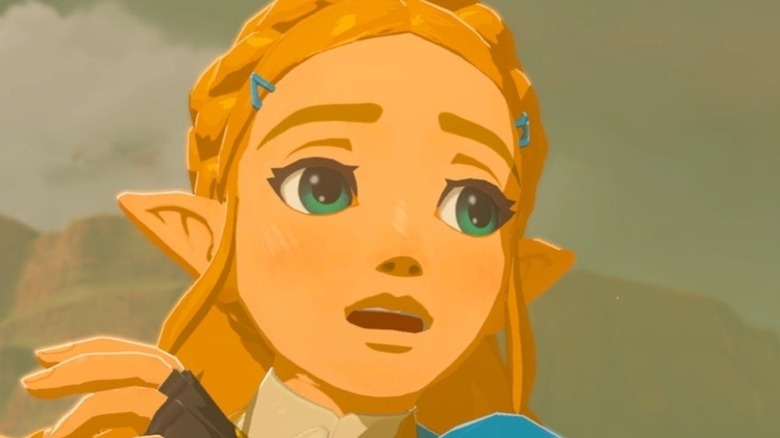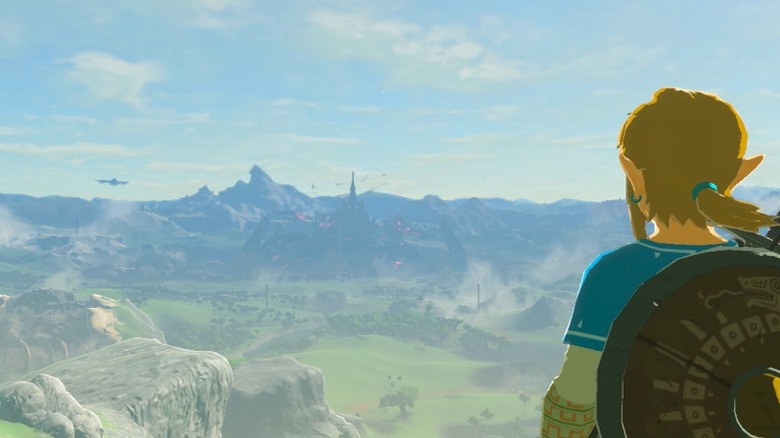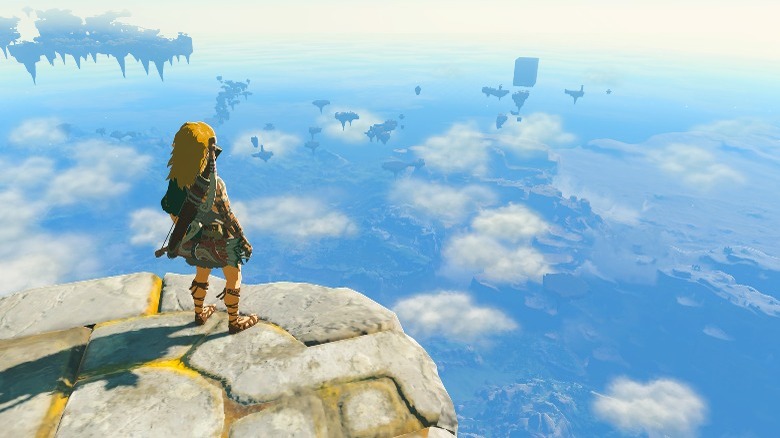Zelda: How The Wii U Held Back Breath Of The Wild (But Not Tears Of The Kingdom)
"The Legend of Zelda: Breath of the Wild" has been widely regarded as one of the most beautiful and all-around best open-world games on the Nintendo Switch, but a lot of fans might not realize that it was actually held back significantly by the Wii U. See, "Breath of the Wild" was released on March 3, 2017 — the exact same day as the Switch. This was a major selling point for the console, but it also presented a problem for Nintendo since it wasn't likely that it could count on enough people buying its brand-new console to ensure that "BotW" reached the number of sales that it needed in order to justify the cost associated with releasing a new "Zelda" game. That meant the company had to make sure that the game could also be released on the previous generation of consoles so that there would be enough people who could purchase and play the game at launch. Unfortunately, this also meant that the developers making the game couldn't do anything with the game that the Wii U couldn't run on its native hardware, and that presented some challenges.
Now the sequel, "The Legend of Zelda: Tears of the Kingdom," is about to be released on the Nintendo Switch as well, and it doesn't appear that it will have to suffer through any of the same restrictions.
How much more powerful is the Switch than the Wii U?
The Nintendo Switch will be over six years into its life cycle by the time "Tears of the Kingdom" is released on May 12, and it's certainly a far cry from the most powerful gaming console on the market. It isn't even the most powerful handheld anymore. Still, it's worth taking a look back at the kinds of technological improvements that were made following the Wii U, so fans can see what kinds of performance improvements the developers had to work with.
According to Versus, the Switch's hardware outperforms the Wii U 8GB in just about every measurable category. Its CPU is 2.15x faster; it has 2GB more RAM, 12.8GB/s higher memory bandwidth, and 218MHz faster GPU clock speed.
It's difficult to gauge exactly how this difference in performance affected the Nintendo development team's ability to make the game the way they always wanted, but it seems significant. Most of those metrics reflect at least a 25-50% increase in speed. A recent interview with some of the game's developers suggests that the main difference is in the scope of the open world and the number of mechanics they could employ.
What restrictions did the Wii U impose?
The Nintendo website recently shared an interview with some of the developers from both of these newer "Zelda" games. The devs were asked whether "Tears of the Kingdom" would have a larger setting than the previous game due to the ability to explore floating islands in the skies above Hyrule. "Actually, the previous title, 'The Legend of Zelda: Breath of the Wild,' was originally developed for [Wii U], so there were restrictions in development," said programmer Takuhiro Dohta. "There were a lot of ideas we wanted to implement during its development, but we made clear decisions on what we wouldn't do in that game. For example, we decided that it wouldn't involve flying."
This implies that the developers had already been considering many of the worldbuilding elements that will be present in "Tears of the Kingdom" back when they were making "Breath of the Wild," but that they were unable to implement them due to Wii U's hardware restrictions.
During the interview, the developers also discussed Eiji Aonuma's desire to allow players to dig their way into underground regions. This idea was scrapped at the time, but it sounds remarkably like the massive subterranean region that was discovered in "Tears of the Kingdom" following the recent leaks. This seems like yet another way that this new game will be similar to what the team originally wanted to make if they didn't have the Wii U holding them back.



